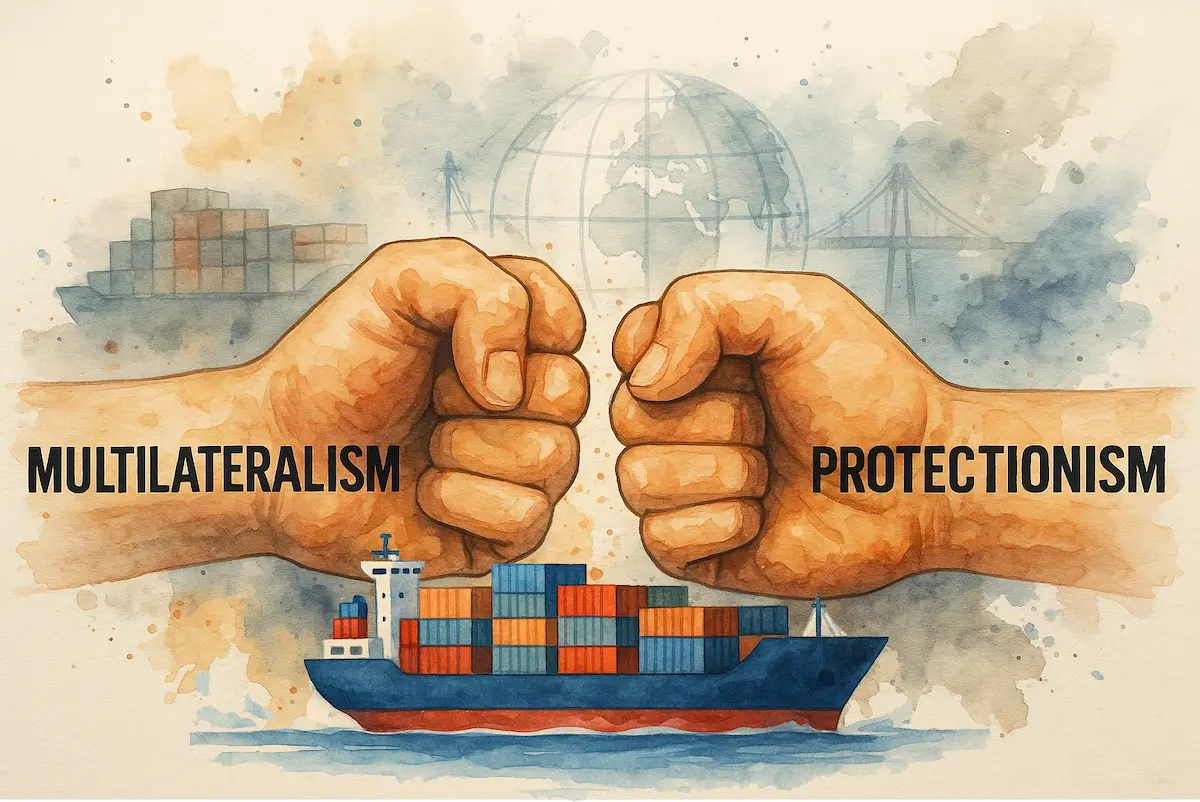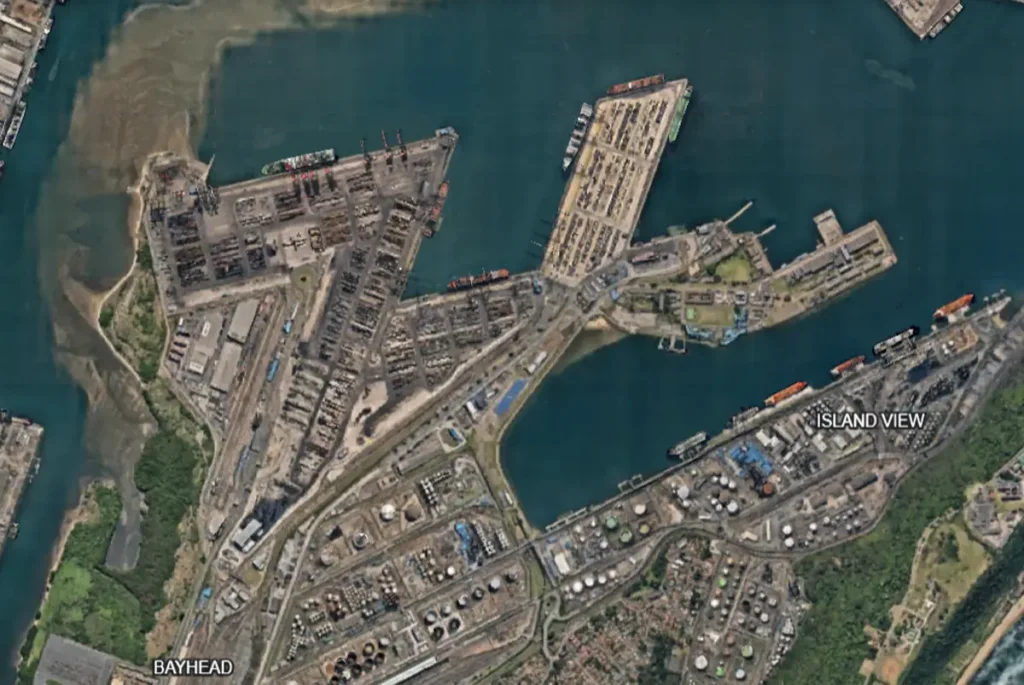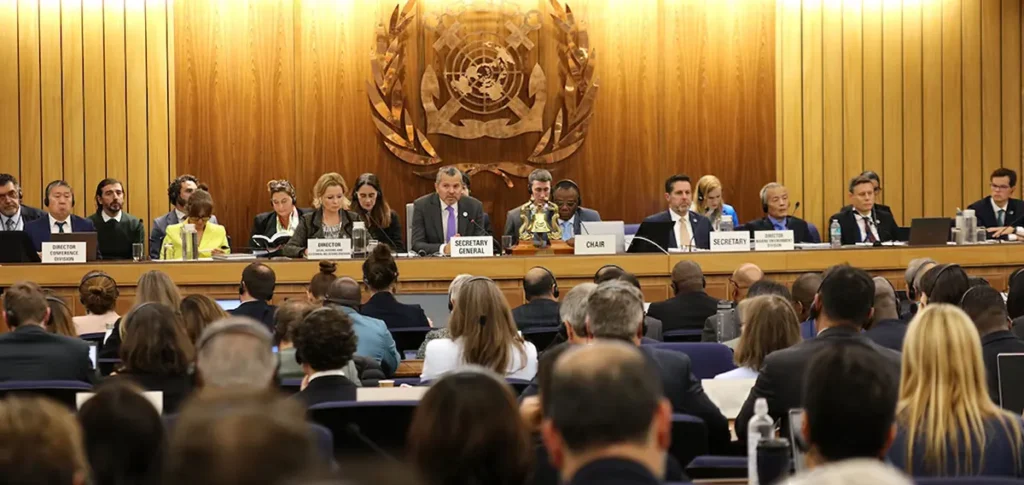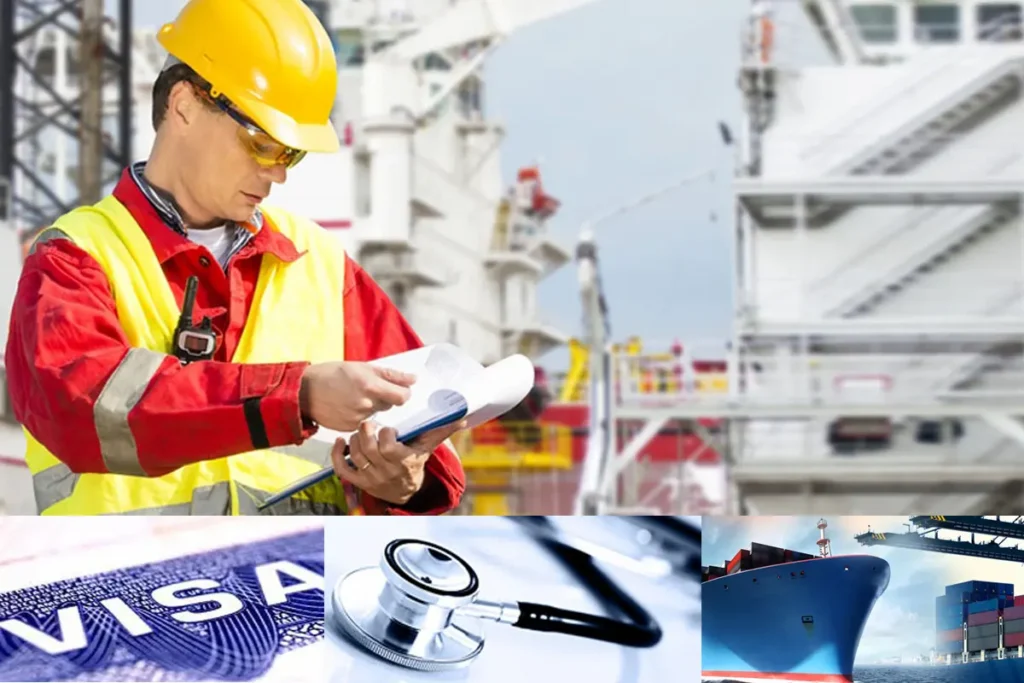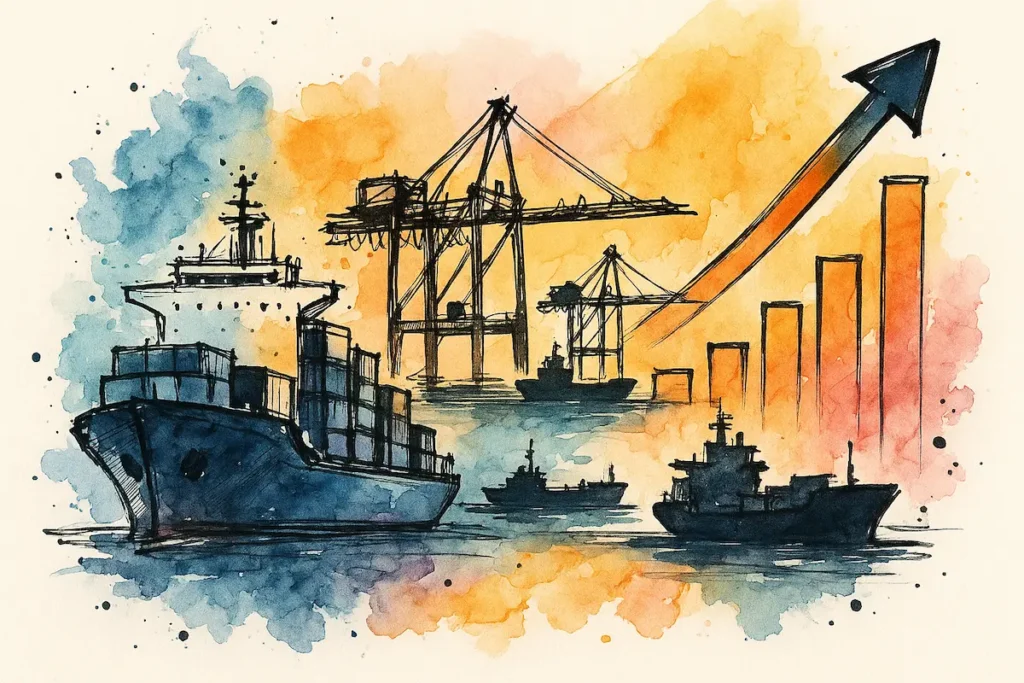Global trade is increasingly defined by the tension between two competing forces.. On one side, multilateralism, championed by BRICS and its partners, calls for fairness, cooperation, and shared governance in economic relations..
On the other hand, protectionism, driven mainly by the USA through tariffs, export controls, and regulatory barriers, is being deployed by advanced economies to defend domestic interests or pursue strategic aims..
For the logistics and supply chain industry, this contest will determine the direction of trade flows, financing, and compliance frameworks in the years ahead..
An expanded BRICS with new weight
Since 2024, BRICS has expanded beyond its original five members – Brazil, Russia, India, China, and South Africa – to include Saudi Arabia, the United Arab Emirates, Egypt, Iran, Ethiopia, and Indonesia..
Together, these countries represent around 45% of the world’s population and contribute more than 35% of global GDP..
This expansion matters for three reasons:
- Energy leverage: With Saudi Arabia, Iran, and the UAE, BRICS now wields significant influence over global oil and gas markets..
- Geographic reach: The bloc spans critical regions across Africa, the Middle East, and Southeast Asia, embedding itself in emerging trade corridors..
- Financial resources: The New Development Bank (NDB) has financed over USD 40 billion in infrastructure, clean energy, and digitalisation projects, while Gulf sovereign wealth funds provide additional deep capital pools..
Xi’s call for defending multilateralism
Chinese President Xi Jinping used the recent BRICS virtual summit to underline the importance of protecting a rules-based international order..
As reported by CGTN, Xi urged BRICS nations to “uphold multilateralism to defend international fairness and justice; uphold openness and win-win cooperation to safeguard the international economic and trade order; and uphold solidarity and cooperation to foster synergy for common development.”..
He also pointed to the Global Governance Initiative (GGI) as a guiding framework based on sovereign equality, rule of law, and cooperative development.. In practice, this vision translates into:
- Infrastructure connectivity: Investment in ports, rail, and logistics corridors across the Global South..
- Digital trade facilitation: Common standards to improve customs efficiency and data interoperability..
- Sustainability: Financing tied to ESG compliance, aligning trade with environmental and social priorities..
The persistence of protectionism
Yet, even as BRICS emphasises cooperation, protectionism remains firmly embedded in global trade..
- United States: Section 301 tariffs on Chinese goods, steel and aluminium duties, and export controls on semiconductors and USTR charges on Chinese ships illustrate how unilateral trade measures are being used to pursue industrial and geopolitical objectives..
- European Union: The Carbon Border Adjustment Mechanism (CBAM) represents a more complex case.. Designed to prevent “carbon leakage” by aligning imports with EU carbon costs, CBAM is formally a climate policy tool.. However, it introduces new compliance obligations and costs for exporters.. While not protectionism in the traditional sense, many emerging economies see CBAM as “green protectionism” because it places additional burdens on their exports..
Brazil’s President Luiz Inácio Lula da Silva also captured his frustration.. Speaking at the BRICS summit, he warned that “tariff blackmail is being normalized as a tool for conquering markets and interfering in domestic issues” and that BRICS members had become victims of unjustified and illegal trade practices..
His comments highlight the reality: for many emerging economies, protectionism is not an abstract debate but a tangible obstacle to trade and growth..
Comparing the two approaches
| Feature | Multilateralism (BRICS vision) | Protectionism (advanced economy measures) |
| Rule-setting | Guided by WTO principles, supplemented by GGI and regional agreements.. | Tariffs, sanctions, and regulatory tools applied unilaterally.. |
| Trade corridors | Expansion of South–South routes; NDB and sovereign funds backing infrastructure.. | Concentration on domestic market protection, reshoring, and controlled access.. |
| Standards & compliance | Emphasis on cooperative frameworks, digitalisation, and ESG-linked financing.. | Complex regulatory barriers (e..g.. CBAM) raising compliance costs for exporters.. |
| Financial frameworks | Push for local currency settlement, BRICS Pay, and alternative financing.. | Continued dominance of USD, IMF, and Western banking systems.. |
| Risk environment | Risks of uneven standards and political diversity among members.. | Risks of fragmentation, trade wars, and retaliatory tariffs.. |
Implications for logistics and supply chains
For logistics and supply chain leaders, this contest has practical consequences:
- Corridor diversification: Emerging South–South routes will require new port, rail, and intermodal capacity, creating opportunities and risks for early movers..
- Financing alternatives: Access to NDB-backed and sovereign wealth-funded projects will grow, but ESG and digital readiness will be prerequisites..
- Compliance complexity: Companies must navigate dual systems – WTO-based rules and BRICS-specific frameworks, alongside unilateral tariffs and carbon-linked mechanisms..
- Currency and payments: Local currency settlement is likely to expand within BRICS, reshaping treasury and FX strategies..
- Resilience imperative: Supply chains must become agile enough to operate under both cooperative and protectionist regimes simultaneously..
Conclusion
The recent BRICS summit underlined the widening fault line in global trade.. Xi Jinping’s call to “safeguard international fairness and justice” reflects a vision of cooperative multilateralism, while Lula’s warning about “tariff blackmail” captures the costs of protectionist measures..
The outcome is unlikely to be a clean victory for either side.. Instead, the future of global trade will be multipolar, shaped by both cooperative frameworks and protectionist barriers..
For logistics and supply chain professionals, the challenge is clear: success will depend on the ability to adapt, comply, and compete across both systems – capturing the opportunities of multilateralism while mitigating the costs of protectionism..

